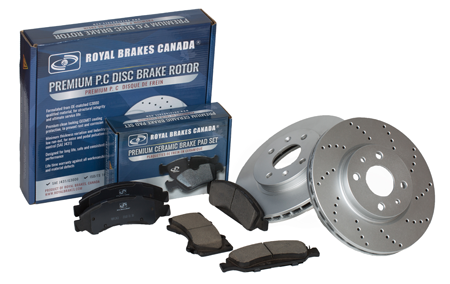|
Select Language
|
||||||||||
|
Quality Control Assurance
Noise Free Braking
Warped Rotor Prevention
Anti Counterfeit Check
|
||||||||||
|
Why Noisy Brake pads?
Metallic brake pads are typically the ones that cause the most noise problems, because they are harder than no asbestos organic (NAO) pads. Their high metallic content often make them squeal when metal rubs against metal.
The amount and type of fillers and binders in a friction material can make a big difference in the amount of noise a given set of pad or shoe produces. Ingredients such as graphite, carbon and "rubber modifiers" may be added to reduce noise. Brass is also another ingredient that helps dampen noise (it also has a cleaning effect on drums and rotors).
The design of a brake pad can also affect the amount of noise produced. A chamfered leading edge on the pads eliminates the sharp edge so the pads will slide across the rotor without grabbing and vibrating. Slotting the pads also changes the frequency at which the pads oscillate, so noise can be tuned out of the brake system.
Many of the newest brake pads designed for quiet operation use a non-metallic "ceramic-enhanced" formula to eliminate noise.
Why Ceramic brake pads?
Ceramic brake pads were first used on a few original equipment applications in 1985. Since then Ceramic brake pads have been recognized for their desirable blend of traits. These pads use ceramic and copper fibers in place of steel fibers in semi-metallic compounds. This allows the ceramic pads to handle high brake temperatures with less heat fade, provide faster recovery after the stop, and generate less dust and wear on both the pads and rotors. From the comfort standpoint, ceramic compounds provide much quieter braking because the ceramic compound helps dampen noise by generating a frequency beyond the human hearing range.
Another characteristic that makes ceramic brake pads attractive is the absence of noticeable dust which sticks to the wheels. All brake pads produce dust as they wear. The ingredients in ceramic compounds produce a light colored dust that is much less noticeable and less likely to stick to the wheels. Consequently, wheels and tires maintain a cleaner appearance for a longer time. According to the laboratory test results and also actual testing of the ceramic pads in the real world, ceramic compounds extend brake life by a significant margin, with no sacrifice in the noise control, or braking performance.
Royal Canada ceramic brake pads are formulated with a premium mix of high quality materials, and are chamfered and slotted according to the OEM design requirements. They are also equipped with high quality shims, as a mean to diminish any probable vibration, to further provide for a quieter driving experience.
The “Bedding-In” procedure
All new brake pads (ceramic and metallic) must be "Bedded-in" with the rotors, when they are installed. Brake pad bedding is an important process that removes impurities from the surface of the new brake pad and lays down a thin layer of friction material residue on the surface of the rotors. This is an important and a must procedure if one wants to get the best out of the new brake pad.
When installing new brake pads, the rotors should be new or at least resurfaced (machined) to remove any transfer film/residue left from the previous brake pads.
It is critical that the installer cleans any rust, scale, or debris from the hub mounting surface thoroughly, and checks the rotors for excessive run-out, with a dial indicator gauge, before installing.
Any new rotor should also be checked for excessive run-out, using a dial indicator gauge, before the caliper and new brake pads are installed.
If a rotor has excessive run-out of over .004" (.10mm) it should be replaced.
Running with excessive run-out on the hub or rotor will cause vibration issues.
Benefit of "Bedding- in" are:
Failure to perform the “Bedding-In” procedures may result in brake judder, excessive noise, glazing, wrapped rotor, low efficiency in stopping power, and/or other difficulties.
"Bedding-in" new brake pads and rotors should be done carefully and slowly. Following are the recommended bed-in procedures for Royal Canada brake pads and rotors:
A) In a safe area, apply brakes moderately from 50 mph to 20 mph and then drive approximately 1/2 mile to allow the brakes to cool.
B) Repeat the above procedure approximately 15 times.
C) Drive slowly and moderately for the first 300 to 500 Kilometers after installing new brake pads.
|
|
|
